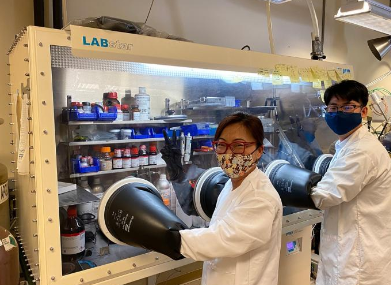Your location:Home >Automotive News >
Time:2022-07-01 15:44:05Source:
Gasgoo News As society transitions to anelectrifiedera, energy storage technologies must continue to evolve to meet growing demands.To achieve an emission-free future, widely used lithium-ion batteries require dramatic improvements in high energy density, safety, temperature resilience, and environmental sustainability.

(Image credit: University of Chicago)
According to foreign media reports, a team of engineers led by Professor Y. Shirley Meng of the Pritzker School of Molecular Engineering at University of Chicago (Pritzker School of Molecular Engineering at University of Chicago) has demonstrated that liquefied gas electrolytes can provide these four basic properties at the same time.The research, conducted by Meng's labs at UC San Diego and the University of Chicago, opens up a pathway to the development of leading, sustainable, fire-resistant batteries at scale.
In 2017, a team of nanoengineers at UC San Diego discovered HFC molecules.This molecule is a gas at room temperature and liquefies under certain pressure.The team then invented a new type of electrolyte called a "liquefied gas electrolyte" (LGE).
The use of liquefied gas electrolyte greatly broadens the selection range of electrolyte solvent molecules.The screened fluoromethane and difluoromethane small molecules have the characteristics of low melting point, fast kinetics and wide voltage window.On this basis combined with co-solvents, these liquefied gas electrolytes exhibit excellent low-temperature performance (below -60°C), Li metal Coulombic efficiency (>99.8%), and high-performance high-voltage cathodes.However, LGE electrolytes still have some drawbacks.Because the molecules used have high saturated vapor pressures and are as flammable as most electrolytes, there are safety and environmental risks to the system.
The researchers wanted to replace the highly soluble liquid co-solvent with the smallest ether molecule, dimethyl ether (Me2O).Yin, a doctoral student in nanoengineering at UC San Diego, said: "As a gas molecule, Me2O can only be used in liquefied gas. It can only work under a pressurized system and can provide better lithium-metal interface and stability, while maintaining fast dynamics.”
Yang, a nanoengineering doctoral student at UC San Diego, hopes to further refine the system."The high pressure and flammability defects cannot be changed by continuing to use the current weak solvents for FM and DFM. Instead, researchers should focus on finding molecules with increased fluorinated carbon bonds."
The researchers looked to the structure of fluoromethane to find fluorinated molecules with longer carbon chains, while maintaining the inherent advantages of liquefied gas, such as low melting point, low viscosity, and maintaining a certain polarity.Considering all the above requirements, 1,1,1,2 tetrafluoroethane (TFE) and pentafluoroethane (PFE) were proposed.Even more surprising, these two molecules are the main components of some fire extinguishers.Not only non-flammable, but also has excellent fire-extinguishing performance.
Statement: the article only represents the views of the original author and does not represent the position of this website; If there is infringement or violation, you can directly feed back to this website, and we will modify or delete it.
Preferredproduct
Picture and textrecommendation

2022-08-04 12:57:12

2022-08-04 12:56:48

2022-08-04 12:56:28

2022-08-04 12:56:04

2022-08-04 12:55:36

2022-08-04 12:55:11
Hot spotsranking
Wonderfularticles

2022-08-04 12:54:48

2022-08-04 12:54:20

2022-08-04 12:53:54

2022-08-04 12:53:32

2022-08-04 12:53:03

2022-08-04 12:52:26
Popularrecommendations
